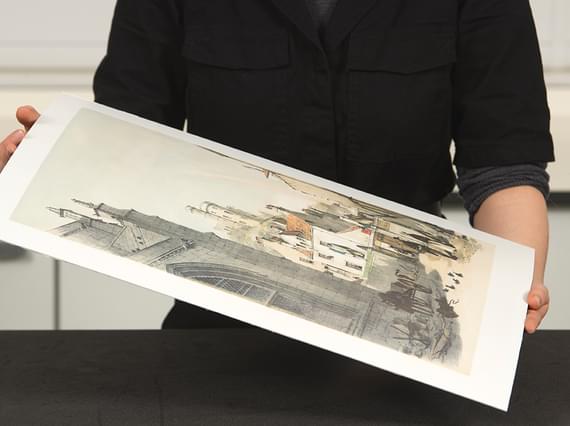
How to pack paper and unframed artworks
Thin paper items can be stored or transported in Melinex sleeves or between sheets of acid-free tissue. Both Melinex and acid-free tissue can be cut to size to ensure objects are not lost within the packaging.
Placed carefully in trays, most single-folio paper items can be layered.
Melinex sleeves or objects in tissue layers can then be secured against movement in transit using the pinning method.
Melinex sleeves are not suitable for objects with friable media (chalk, charcoal, pastels, soft pencil). This is because non-fixed media can abrade on the inside of the Melinex and become removed from the object’s surface.
They can also be static so care should be taken when inserting items into the sleeve. They are not suitable for very fragile or torn items as tears can worsen when being placed into or removed from the sleeve.
Objects unstable for melinex sleeves can be packed in trays between acid-free tissue layers or placed in tissue and between two sheets of acid-free card for support.
Larger 3-D paper objects such as books may be more suited to soft wrapping, depending on their size.
